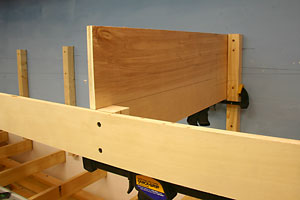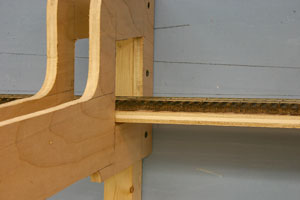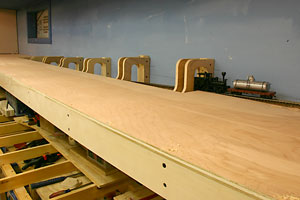The model railway is built using two level construction in a room approximately 8 feet by 16.5 feet. A group of staging yards covering the two levels also exists in an adjacent room that doubles as a workshop. The two levels are joined by a single track line with a passing siding along a 5 percent grade.
The basic construction of the lower level on the railway is wooden "L" girder supported by 2" x 2" legs with girders attached to the "L" girders. The level is than covered by a plywood cookie sheet. This original lower level was salvaged from a prior N scale layout, the Burlington Northern Santa Fe Railroad North-South Division. The process of building the new lower level involved removing all of the N scale scenery and underlying roadbed, plywood. The sections were separated and the legs shorted about 6".
The upper level of the CWRy was constructed using box beam construction made from strips off plywood cut, glued and screwed together. Once the top plate was added this proved to be a very strong frame with no need of legs, posts or drop support wires. At one point this upper level sticks out 24" from the wall.
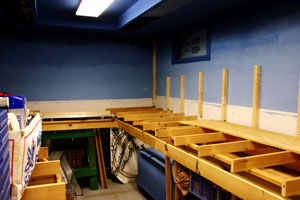
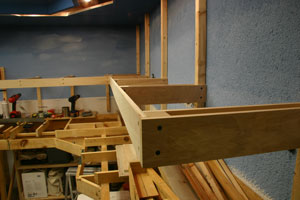
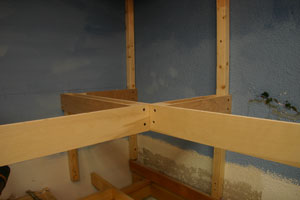
One area that was particularly challenging was the grade from the one level to the other. I didn't want to construct a helix, multiple loops of track built as a spiral designed to gain height on each loop eventually arriving at the second level. The option I choose was to run my track in one continuous long run from one level to the other. The connection to the lower level was straight forward and didn't present any significant challenges but the connection at the top was another story all together. I didn't want to lose any of the possible scenic areas on the lower level so it was imperative that the track ran along the wall to gain height. This resulted in a ruling grade of 5% or in other words a rise of 5 inches for every 100 inches travelled. In the real world of railroading a grade this steep would not used for most of the common railroads but the narrow gauge railroads of the style built here this would be relatively common. The solution for me was to have may track approach the upper level from the back of the level and not the front. The only way that I could see to achieve that was to have my track pass through the upper box beam frame without weakening it. The result is shown in the next series of images.
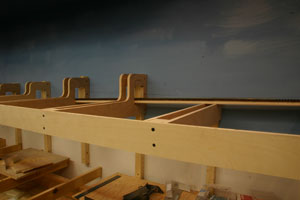
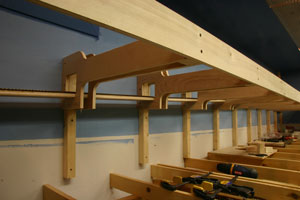
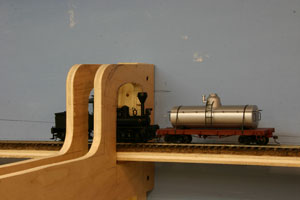
Each pair of horizontal supports from the back wall to the front fascia were custom made to fit the grade of the incline at that point and still maintain the a level upper deck for laying track. In the first of the three following images it shows how I started with a rectangular piece of plywood cut to the proper length reach from the wall to the facia. I held it in place using to pressure clamps in the proper position and added pencil marks for the deck height and the opening required for the incline. Using a jigsaw I cut out the piece and rounded all of corners, included fillets, at the transition from the deck to the incline support area. This was done to increase the strength of the support to reduce the possibility that the support may crack over time. You may have noticed that in the image the cut out for the trains is rectangular and in the third image the top of the incline openings is rounded. This rounding was added later to accommodate the needed height clearances for the equipment used on the railway. Also in this second image you may notice the horizontal pencil line which is drawn at the height of the upper level deck and a second pencil line that follows the slope of the incline. These lines were my guide as I moved around the room. The third image shows the solid upper deck added, not only does this help improve the looks of the upper level it is also essential to the overall strength of the box beam support construction.
